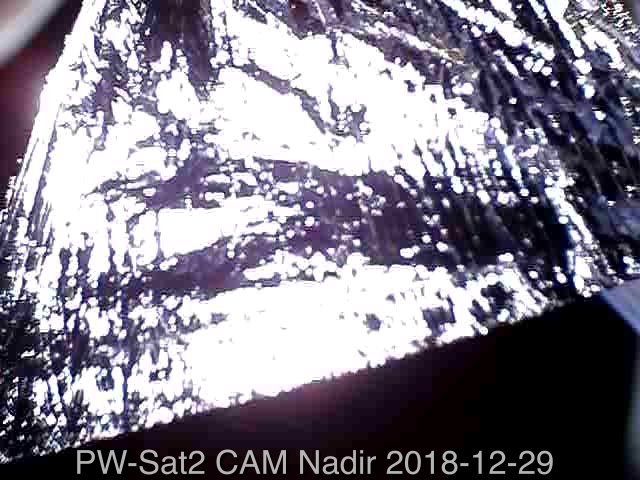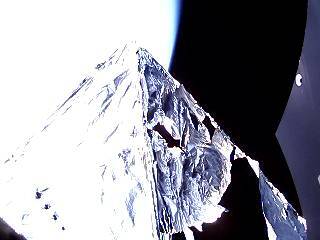PW-Sat2 decayed
WUT students' satellite completed the mission! (update)
After 813 days, PW-Sat2 deorbited on February 23, 2021. The satellite burnt up completely in Earth’s atmosphere. The last signal was received 14 minutes after midnight, Polish time.
PW-Sat2 is a project by the Students’ Space Association (run at the Faculty of Power and Aeronautical Engineering of the Warsaw University of Technology). The primary objective of our students was to engineer and test an innovative deorbiting system consisting of a sail with the surface area of 4 m².
Primary part of the mission
The satellite was carried to the Earth’s orbit aboard the Falcon 9 rocket on December 3, 2018. During the primary part of the mission, all satellite subsystems were tested successfully: the power supply system, the communication system, the onboard computer, the cameras, as well as the Sun and space radiation sensor. Over that period, PW-Sat2 also took the first Polish photograph from a satellite.
The primary phase of the mission ended on December 28, 2018, when the deorbiting sail was deployed. PW-Sat2 received a signal with the relevant command, transmitted by the ground station. Confined to a container so far, the sail was released and achieved the target shape.
First shots taken by onboard cameras could be received already on the same day. Unfortunately, after approx. 3 days tears appeared on the sail, gradually engulfing approx. 30–35% of its surface. As a result, sail effectiveness was reduced and the expected deorbiting time was extended from about dozen months to approx. 2.5 years.
Waiting for the deorbiting
Once the sail was deployed, the team proceeded to the subsequent phase of the project. From that moment on, communication with the satellite was established on a regular basis: over 5,000 communication sessions were performed and nearly 1,500 photographs taken by onboard cameras were received. Meanwhile, the onboard computer’s software was updated twice, which allowed energy savings by reducing power consumption after the solar panels were overshadowed by the deployed sail.
The last weeks saw the satellite operator team monitor the condition of the deorbiting sail every day by taking and downloading photographs and telemetric data. The final series of photographs was taken on Saturday, February 20, 2021, when the satellite was approx. 312 km above the Earth. The condition of the sail remained good.
Towards the end of the mission, the photographs revealed sail rotation relative to the satellite and a gradual increase in the rotation of the entire satellite, which reached the angular velocity of approx. 80 degrees per second.
The satellite remained fully operational until the end of the mission. Due to the rapid orbit degradation and the difficulties in predicting satellite position, the last few sessions presented a considerable challenge.
Farewell to the satellite
The last communication session took place on the night of 22–23 February, when the satellite was located at an altitude below 275 km. Precisely at 00:14:14, the ground station in Gliwice received the last radio frame from PW-Sat2, which contained the following message:
Goodbye PW-Sat2 and youtu.be/dQw4w9WgXcQ
“The deorbiting took place most likely in the morning on February 23, 2021,” explains Dominik Roszkowski, the vice-coordinator of PW-Sat2. “The deorbiting sail reduced the satellite’s orbit from the original altitude of 590 km over 2 years 1 month and 24 days. If no deorbiting system had been used, PW-Sat2 would have remained in the Earth’s orbit for approx. 15 years.”
The majority of project achievements have been made available to the public, e.g. as technical documentation, publications, or conference presentations.
“In our opinion, the project is our huge educational and technological success,” stresses Dominik Roszkowski.










